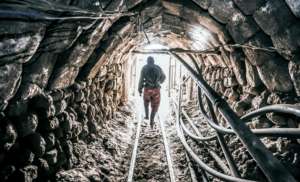6/14/2022—With summer weather in full swing, temperatures have already hit record highs. Predictions already tell that this summer’s temperatures will be even hotter than normal in the United States, according to the current Farmer’s Almanac. With intense heat waves comes increased responsibility to protect yourself during the day, especially if you work outdoors.
Over 67,000 people seek medical treatment for heat-related illnesses yearly in the U.S. including heat stroke, heat exhaustion, heat rash, heat syncope (fainting) and rhabdomyolysis, the rapid breakdown of muscle from exertion and heat.2 Signs of heat illnesses can include muscle cramps, dizziness, fainting, dry mouth, mental confusion, increased sweating, increased redness, sunburns, rising body temperatures and even seizures. Exhibiting signs is cause for fast aid, and in some cases a trip to the emergency room. From the outdoors to poorly ventilated warehouses, knowing the signs of heat-related illnesses is vital, but as always, prevention is key.
Heat illnesses at work are more likely to occur within the first few weeks of work, as employees acclimate. In fact, 70% of heat-related fatalities happen in the first week, according to the Occupational Health and Safety Administration (OSHA).3 The U.S. Department of Labor (DOL) advises practicing the “20% Rule” which advises that employees work no more than 20% of their first shift in full heat on the first day. Time can then be increased by no more than 20% a day until employees are fully acclimated to the environment.
Another rule of thumb is always supplying workers with ample water access and frequent breaks. Hydration throughout shifts helps regulate body temperature and prevent dehydration. Make sure workers get a cup of water every 20 minutes they spend in heat-ridden environments, according to the DOL. As they hydrate, it’s also important to provide breaks in shady, cool, and if possible air-conditioned environments, to avoid exhaustion and heat stroke.
Additionally, employers can prevent heat illness and fatalities by educating their workforce. Education means proper training and includes learning the signs of heat-related illnesses, first aid treatments from ice packs to supplying water, and recognizing heat hazards and how to fix them. Supervisors, along with employees, should also be trained to properly protect their workers.
With technology from CoRe, you can arm your workforce to beat the heat with 5G-enabled Personal Safety Devices (or badges) that can help you monitor your workforce through the scorching summer months. CoRe provides each badge an employee profile which can keep track of training completed, or needed, and tracks worker time in the field, so that management can ensure breaks are provided depending on location and time working. With CoRe’s SOS-Button Alerts and Fall Detection capabilities, lone workers or any worker that may faint from heat illness, will send alerts directly to management.
…
1 Summer Weather Forecast 2022: A scorching, stormy start. Almanac.com. Retrieved June 14, 2022, from https://www.almanac.com/summer-weather-forecast#:~:text=On%20average%2C%20we’re%20predicting,and%20almost%20everywhere%20in%20between
2 Centers for Disease Control and Prevention. (2022, May 13). Heat stress related illness. Centers for Disease Control and Prevention. Retrieved June 14, 2022, from https://www.cdc.gov/niosh/topics/heatstress/heatrelillness.html
3 Department of Labor Logo United States Department of Labor. Heat – Protecting New Workers | Occupational Safety and Health Administration. (n.d.). Retrieved June 14, 2022, from https://www.osha.gov/heat-exposure/protecting-new-workers





